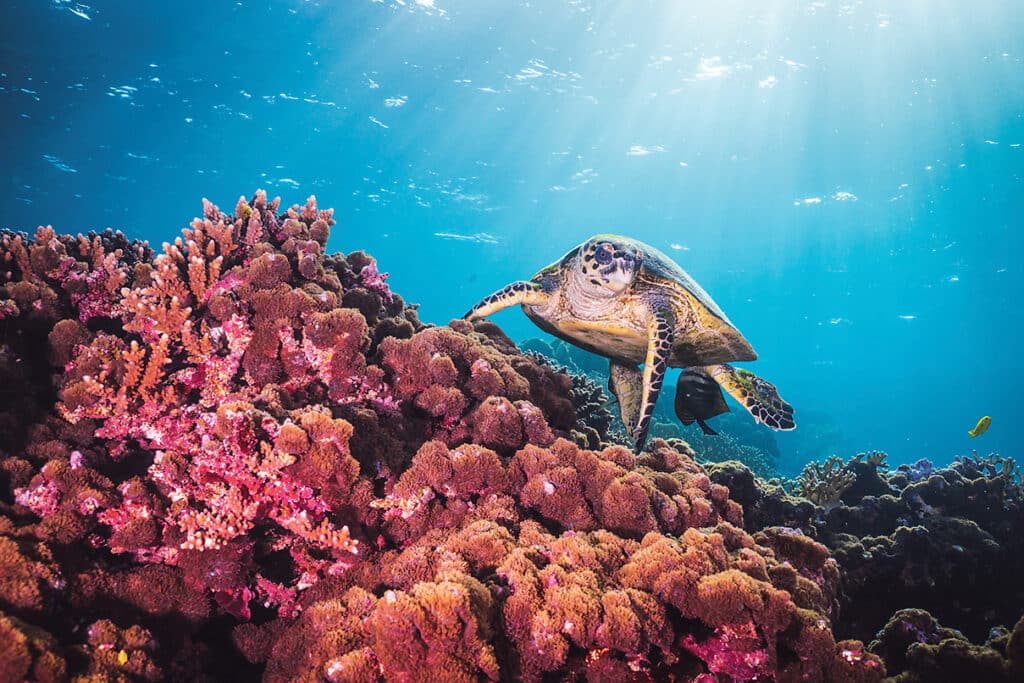
A few years ago, an inquisitive student asked me, if I could learn any language what would it be? Having an interest in history, I said Latin, in order to unlock the knowledge of the past. In turn, I asked her the same question and she said she would learn computer coding languages to unlock the future. It said a lot about this clever student and how she thought. But since reading Karen Bakker’s breakthrough scientific book, ‘The Sounds of Life,’ I want to revise my own answer: I would love to speak the language of animals and plants. Yes, you read that correctly: their language.
This not some ‘Doctor Dolittle’ fairy-tale. Bakker’s book is 350 pages long and 150 of those pages are footnotes, appendices and a bibliography of such scientific depth, that one cannot but be impressed by the level of research and scholarship. I’m keen to stress her level of research, because what you are about to read will change your perception of how we treat animals and nature, and it is based on sound scientific knowledge.
What Bakker has done in her book is to illuminate how advanced mammal and even plant language is. Before we look at her research, however, let’s look briefly at human language. Language is humanity’s most precious evolutionary trait and has given us advantages that has seen our species conquer the world. Communication has allowed ideas to germinate, and spread, and has created social and cultural ties that have grown into organised societies.
One of our earliest written texts is the Bible. Many have interpreted it in an allegorical sense, others quite literally. The Bible has given us ‘permission’ to dominate the planet for our own means. In the book of Genesis, God declared, “Be fruitful and multiply, and fill the earth and subdue it; and have dominion over the fish of the sea and over the birds of the air and over every living thing that moves upon the earth.” And by God, have we honoured that contract to the letter of the law: bringing species to extinction and many more to its brink, devouring rainforests, making deserts of oceans from over fishing, polluting our hemisphere to such a degree that we are finally accepting [though not agreeing on how or what to do] that climate change is on the verge of taking us from the book of Genesis to book of Revelations. All that in just a fraction of the 300,000 years that our ancestors have walked the earth.
The colonisers, from the age of Columbus, brought the conquistadors and their ruin to environments that had previously flourished. The Industrial Revolution brought us advancement but at the cost of destruction to the atmosphere. Now the era of mass travel and our insatiable appetite for materials has turbo boosted us into a place where the world is faced with cataclysmic changes that may hasten the line of Homo-sapiens to an end.
Would we be more considerate of our environment if we could understand the animal and plant kingdom? Incredibly, with the advancement of science and engineering, algorithms are already being used to decipher what they are saying. Still think this is more science fiction than science? Let’s have a look at some of Karen Bakker’s incredible research, and perhaps begin with another famous biblical image: the honey bees.
The famous honey bee dance, that has been observed by bee keepers for millennia, has now been decoded. Scientists have learnt what the bees are ‘saying’. This body language communication is used by bees to explain where suitable habitation is, and also how far away, and how long it can take to get there. They can even communicate to each other the dangers or suitability of such an environment. Even more incredibly, through a combination of engineering and computer science, they can be ‘spoken’ back to, using artificial robotic bees that have been programmed with the language. This is vital because bees need help to live in a changing world. As we have come to learn, losing honey bees in a region has had disastrous knock on effects for pollination and inter-species dependency, including our own. Bakker explains that by learning to communicate, we can ‘send’ bees to safe environments where they can recolonise and thus protect their existence. All this has been made possible by learning the language of bees!
What this shows is that communication cannot be solely defined in ordinary human terms, that is, by words, sound, or even vocal cords. Not to accept that would be akin to not accepting, say, sign language, as a form of communication for audio impaired people.
If you are not satisfied that body or sign language in animals really constitutes language and communication, and you need more proof, look no further than the mighty elephant. We tend to consider the roar of animals as a rudimentary and simple form of warning or calling. But scientists through their study of bio-acoustics, have now unlocked elephant vocabulary. Bakker’s book goes into great detail, but in a nutshell, the mighty elephant fears no creature in the jungle like the bee, which can find the few soft spots on its armour-like hide. Scientists have discovered that elephants have a specific call or ‘word’ in their lexicon to warn of approaching bees. Conservationists realise that the conflict between man and beast too often leads to destroyed farms and dead elephants. Understanding their language means that farmers in Africa can ward off elephants that may otherwise encroach upon their crops. Again, through this new knowledge of bio-acoustics, warning systems have been developed to replicate elephant calls that communicate an exact message, ‘bees are here: don’t come in’. The proof is in the pudding. Hundreds of farms that have used this technology have reported that elephants understand and have kept away, whereas before, fences, wires and ‘human sounds’ had little effect.
Bakker also looks at the whale call. We are familiar with dolphin and whales sounds. Did you know they also have sounds at a frequency beyond our simple human pitch? Without us knowing it, whales have been carrying messages about mating or warnings about dangerous waters and locations. We have, for too long, interpreted any animal or mammal sound as some sort of raw ‘instinct’ rather than language. Yet these ‘simple’ beasts have demonstrated to scientists complex communication and language that is constantly evolving. Part of the reason Bakker has written this book is to illustrate how, armed with animal and mammal language, we can find ways to co-habit rather than dominate our planet. In Canada, for example, ships are now using bio-acoustics equipment to communicate to whales in their language, warning that they could be in danger in certain shipping regions, and this has helped whales avoid accidental strikes.
Bakker doesn’t stop there. Sea turtles, once thought to be noiseless, communicate to each other in frequencies beyond our abilities. Their language allows them to direct each other to beaches where they can safely hatch their eggs. They have had to do this, because so much of their traditional laying ground has been destroyed by humanity. Coral reefs, which are officially recognised as living organisms, can communicate in their own unique ways. Scientists are already learning their language so that corals that seem beyond repair, can be regenerated. Incredibly this means that scientists can ‘tell’ the zooplankton and other species, ‘to come live here in our coral’. If they return to the reefs, their symbiotic co-habitation within the coral, replenishes it. Science is forever challenging what we know and understand. People will resist these relatively new discoveries because understanding mammals’ language means understanding their emotional empathy. In recognising other species’ language and empathy, we will soon come face to face with moral decisions like, can we treat animals like we do already? Mass dungeons of piggeries, crammed factory hen farms, prison-like zoos, artificial fish farms. If we continue to discover what they could tell us, we could be horrified by what they say. It will suit some people to stay deaf in order to maintain the hierarchy of mankind over the planet. There are eight million types of species that share our planet, but just one, human beings, are destroying it.
There is a beacon of hope. Parallel to the COP conference on climate change, there is a COP conference on biodiversity. Biodiversity, simply put, is the range of habitats that we have on our planet, such as marine ecosystems to geoparks. The breakthrough decision, made in 2022 by the international community, was to adopt a roadmap to protect area-based targets. This roadmap has designated 30 per cent of the Earth’s land surface as a protected area. It aims to restore the planet’s degraded terrestrial, inland water, coastal and marine ecosystems by 2030.
While climate change tends to divide people, through everything from apathy, to economics or just simply denial, the protection of our biodiversity is something that environmentalists and scientists have been making more progress on. Karen Bakker’s book, ‘The Sounds of Life’ illustrates how far we have come in understanding our worlds’ species. We have been deaf to them for too long; it’s time to listen.



